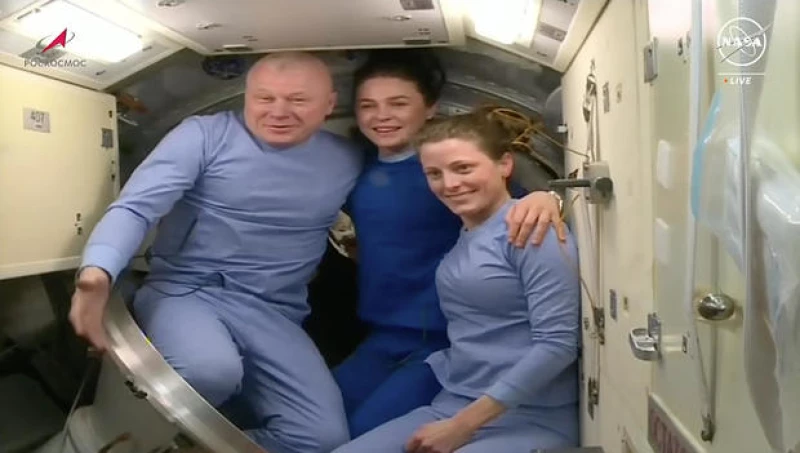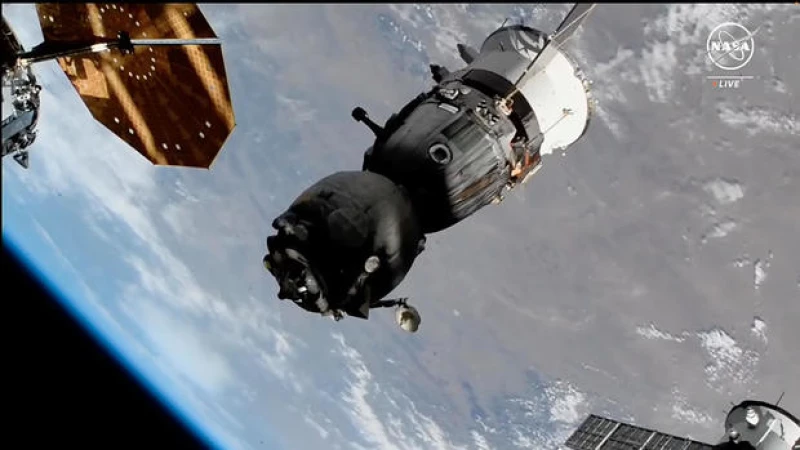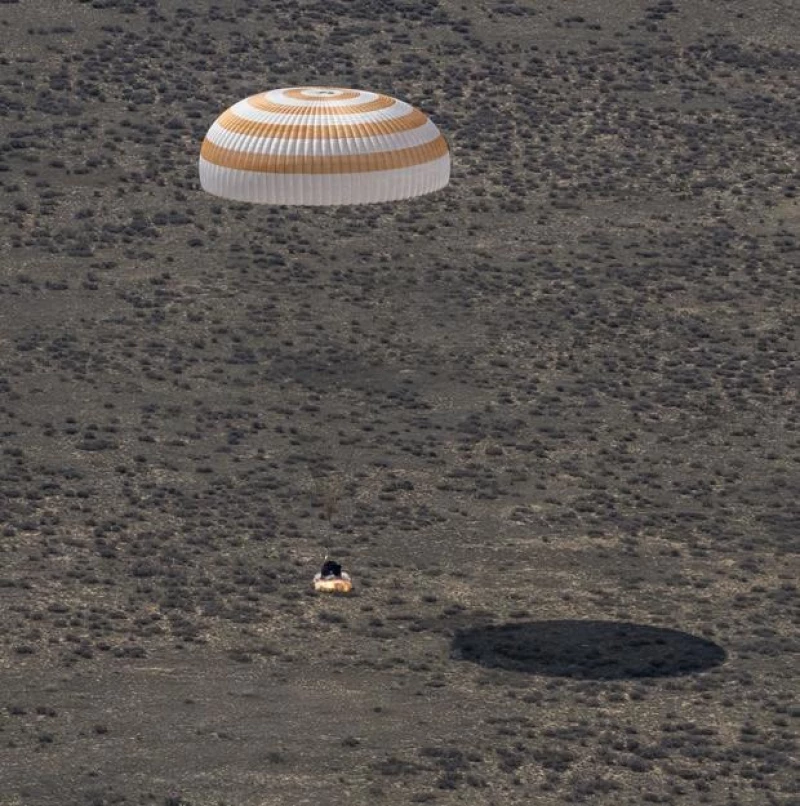A Russian Soyuz ferry ship undocked from the International Space Station and flew back to Earth early Saturday, bringing a Russian cosmonaut, a Belarusian guest flier and a NASA astronaut to a picture-perfect landing on the steppe of Kazakhstan.
Soyuz MS-24/70S commander Oleg Novitskiy, flanked on the left by Marina Vasilevskaya of Belarus and on the right by NASA astronaut Loral O'Hara, touched down about 90 miles east of the town of Dzhezkazgan at 3:17 a.m. EDT.

Russians recovery crews were on the scene within minutes to assist the returning station fliers out of their cramped Soyuz descent module as they began re-adjusting to the tug of gravity.
For veteran Novitskiy and first-time flier Vasilevskaya, the re-acclimation should be relatively easy. They launched on March 23 aboard the Soyuz MS-25/71S spacecraft along with NASA astronaut Tracy Dyson and docked at the station two days later.
Spending just two weeks aboard the station, they returned to Earth aboard the older Soyuz MS-24 spacecraft that carried station commander Oleg Kononenko, Nikolai Chub and O'Hara to the lab complex last September.
Kononenko and Chub are currently in the midst of a yearlong space mission, set to return to Earth next September alongside Dyson, utilizing the new MS-25 spacecraft provided by Novitskiy. Novitskiy and Vasilevskaya successfully brought O'Hara back to Earth using the older ferry ship she departed on last September.
Upon landing, O'Hara had accumulated 204 days in space, completing 3,264 orbits and traveling 86.6 million miles. Additionally, she conducted a six-hour and 42-minute spacewalk. Novitskiy and Vasilevskya spent 14 days in space, completing 224 orbits and traveling 5.9 million miles.
All three astronauts appeared to be in good health and high spirits as they relaxed on recliners next to their charred Soyuz descent capsule, attended to by support staff.

"I am filled with emotions," expressed Vasilevskaya, communicating through a translator on NASA TV. "It is truly incredible. My wish is for all individuals on Earth to appreciate and value what they have, for it is precious.
"I extend my gratitude to all the people of Belarus," she added. "While we had hoped to stay a bit longer, returning feels wonderful. Being aboard the station was an amazing experience."
Vasilevskaya, a talented ballroom dancer and former flight attendant at Belavia Airlines, holds the distinction of being the first Belarusian citizen, a strong Russian ally, to journey into space since the dissolution of the Soviet Union.
Despite strained relations between the United States and Russia, the two countries continue to collaborate in space exploration, jointly managing the operations of the International Space Station.
During the pre-launch preparation, Dyson expressed her enjoyment of training with Vasilevskaya, mentioning that "she's been a real delight to work with."

Following brief medical examinations and satellite phone conversations with their families, the group was scheduled to be transported to Karaganda via helicopter. O'Hara will then travel back to Houston on a NASA jet, while Novitskiy and Vasilevskaya will return to Star City near Moscow.
Remaining in space were ISS commander Kononenko, Chub, Dyson, cosmonaut Alexander Grebenkin, and NASA astronauts Matthew Dominick, Michael Barratt, and Jeanette Epps.
O'Hara's journey back to Earth marked the end of a series of flights aimed at replacing five of the space station's seven long-duration crew members.
NASA initiated the launch of Dominick, Barratt, Epps, and Grebenkin to the station on March 3 using a SpaceX Crew Dragon spacecraft. They took the place of four other crew members who returned to Earth on a different Crew Dragon.
This paved the way for the launch of Novitskiy, Vasilevskaya, and Dyson, who brought a new Soyuz spacecraft and the experienced NASA astronaut to the station before facilitating O'Hara's return to Earth.







